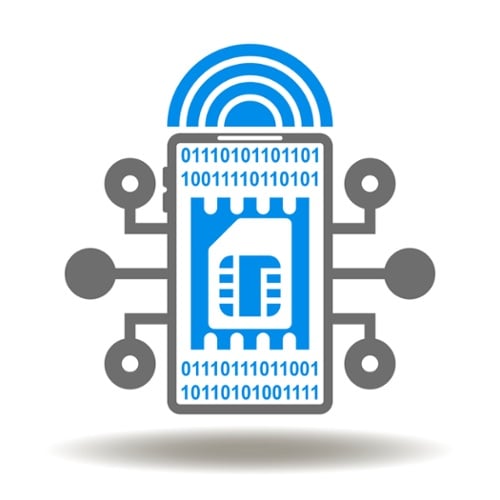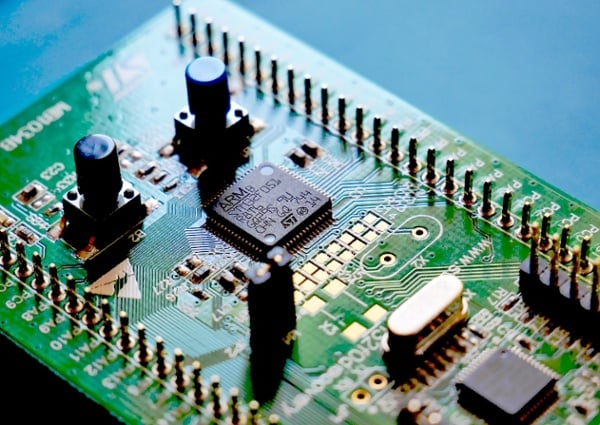

Quick definition: Remote SIM provisioning is a process for changing a Subscriber Identity Module’s (SIM) profile or selecting a new one over-the-air (OTA), which changes the SIM’s primary cellular carrier without requiring a new SIM card to be inserted in the device. This is only possible with an eUICC, sometimes referred to as an eSIM.
While remote SIM provisioning has been widely adopted for use in cell phones, in the Internet of Things (IoT), adoption has lagged behind.
A SIM profile is associated with a specific carrier, granting the SIM access to that carrier’s network and any networks the carrier has a roaming agreement with. When the cellular device leaves the carrier’s network and uses coverage from one of these partner networks, it’s “roaming.” But if a device needs to be in a region where its carrier doesn’t have coverage or any roaming agreements, the SIM needs to be provisioned with a new SIM profile for a carrier that does have coverage.
Traditionally, changing SIM profiles meant physically swapping out SIM cards. This is relatively simple with a single smartphone, but for an IoT manufacturer, it would be prohibitively expensive to physically change thousands of SIM cards—especially if your customers are located all around the world.
Remote SIM provisioning is a critical game-changer for cellular IoT that enables manufacturers to remotely change their devices’ primary cellular carrier.
Here’s how it works and how it improves your IoT business.
How does remote SIM provisioning work?
Remote SIM provisioning is made possible by an eUICC, a technology that’s part of the embedded SIM (eSIM) standard and is sometimes conflated with an eSIM. An embedded Universal Integrated Circuit Card (eUICC) is a SIM component that allows a carrier to add a new SIM profile. For consumer devices, using an eUICC to switch profiles is relatively easy. But a Machine-to-Machine (M2M) eUICC requires the carrier to build an integration between their tools and protocols and the carrier you’re switching to.
These custom integrations can take significant time and money, but they’re essential for IoT businesses to deploy in countries like Brazil or India, where permanent roaming is forbidden and devices need a local carrier.
Remote SIM provisioning with this method effectively cancels your contract with one carrier and begins a new contract with the other. You do have the option to keep the original SIM profile to use as a backup, but this requires you to pay for both contracts simultaneously. Normally, changing profiles also means changing platforms, but with a connectivity provider like emnify, everything stays in our centralized SIM management system.
Since eUICC is the main technology that facilitates remote provisioning and remote provisioning is a capability that was introduced with standards for the embedded SIM (eSIM), it’s fairly common to see eUICC and eSIM used interchangeably. However, the eUICC is the technology that enables this functionality.
Does Multi-IMSI use remote SIM provisioning?
Multi-IMSI is another SIM technology IoT businesses can leverage to change SIM profiles—but this doesn’t actually involve provisioning a SIM with a new profile. IMSI stands for International Mobile Subscriber Identity, and a SIM with Multi-IMSI essentially has multiple identities that it can change between, each of which is associated with a separate Mobile Network Operator (MNO) profile. This is not the same as remotely provisioning a new profile.
While an eUICC integrates the technologies of two separate carriers to transfer a subscriber from one to the other, Multi-IMSI enables a device to “become a different subscriber.” With eUICC, you’re remotely adding a new SIM profile. With Multi-IMSI, you’re remotely changing to a different profile that’s already installed on the SIM.
This method is significantly faster and more affordable than using an eUICC (it can even happen automatically based on pre-configured criteria), but it’s not ideal for every situation. Multi-IMSI software has to be pre-installed on SIM cards, and carrier agreements can change over time.
The only way to remotely provision new SIM profiles is with an eSIM or eUICC.
The benefits of remote SIM provisioning
For IoT businesses, remote SIM provisioning is critical to your scalability and long-term success. It reduces costs and time to deployment and enables you to provide future-proof cellular connectivity for your customers.
It ensures you can always deploy in new countries
As you deploy your IoT devices in new countries, a SIM with remote provisioning technology can change profiles and carriers as needed. Without an eUICC (or Multi-IMSI preloaded with the right profiles), your alternative is to install new SIMs, which also involves creating a separate SKU to differentiate these devices from your others. They may require a new connectivity management system and contract with another carrier as well. Over time, you could wind up with numerous SKUs, systems, and contracts to juggle for a single IoT device.
Remote SIM provisioning is the secret behind emnify’s global IoT SIMs, which combine eUICC and Multi-IMSI technology in a single SIM.
It helps future-proof your IoT devices
Imagine that you’ve deployed thousands of devices in a handful of countries, all using the same SIM card and MNO profiles. Then your carrier goes out of business or declares bankruptcy. Or perhaps they’ve decided to reallocate bandwidth from the network you need (such as 2G or 3G) to newer cellular technology (such as 4G or 5G). To maintain service, you have to reprovision your devices with new SIM profiles before the carrier shuts down the network. With remote SIM provisioning, that’s no problem—you can find a new carrier with coverage in the same area. But without eUICC or Multi-IMSI, you have to physically replace all those SIMs.
There’s no need for physical access to a device
When you have to manually replace SIMs, it’s expensive. Not only are you purchasing thousands of additional SIMs, but you have to send field reps to visit your customers and manually install them to ensure they work correctly and that this responsibility doesn’t fall on your customers. It’s expensive for your customers, too, because it likely means extensive downtime while installing the new SIMs. Even if it’s scheduled, that disruption costs them business.
Enable remote SIM provisioning with emnify
emnify’s global IoT SIMs combine Multi-IMSI and eUICC technology, giving you two ways to remotely provision your SIMs with new MNO profiles. With emnify, you’re never locked into a contract with a carrier, and wherever you deploy, your IoT devices always stay connected. You don’t even need to worry about remotely provisioning SIMs—we’ll do all the heavy lifting, and you just enjoy continuous global service.
Get in touch with our IoT experts
Discover how emnify can help you grow your business and talk to one of our IoT consultants today!

Christian Henke
If you want to understand how emnify customers are using the platform Christian has the insights. With a clear vision to build the most reliable and secure cellular network that can be controlled by IoT businesses Christian is leading the emnify product network team.



